
Bulletin of the University of Karaganda-Chemistry
Scope & Guideline
Pioneering Research in Chemistry and Related Disciplines
Introduction
Aims and Scopes
- Materials Chemistry:
The journal publishes research on the synthesis, characterization, and application of various materials, including composites, polymers, and nanomaterials. - Analytical Methods:
There is a strong emphasis on developing and validating novel analytical techniques, including chromatography, spectroscopy, and electrochemical methods for qualitative and quantitative analysis. - Environmental Chemistry:
Research addressing the impact of chemical processes on the environment, including waste treatment, pollution control, and the development of sustainable materials. - Biochemistry and Medicinal Chemistry:
The journal features studies on the synthesis and evaluation of bioactive compounds, drug delivery systems, and the exploration of natural products for potential therapeutic applications. - Inorganic Chemistry and Coordination Compounds:
Publications include the study of metal complexes, their synthesis, properties, and applications in catalysis and materials science. - Polymer Chemistry:
Research on the synthesis, modification, and application of polymers, including their physical and chemical properties, degradation, and biocompatibility.
Trending and Emerging
- Nanomaterials and Nanotechnology:
There is an increasing focus on the synthesis and application of nanomaterials across various fields, including catalysis, drug delivery, and environmental remediation. - Green Chemistry and Sustainable Practices:
Research that emphasizes environmentally friendly synthesis methods and the development of sustainable materials is on the rise, aligning with global sustainability goals. - Biomaterials and Bioengineering:
Emerging studies on the development and application of biomaterials for medical and environmental purposes indicate a growing interdisciplinary approach combining chemistry with biology and engineering. - Electrochemical Applications:
The trend of applying electrochemical methods for various analyses and material synthesis is gaining momentum, particularly in the context of energy storage and conversion. - Computational Chemistry and Molecular Modeling:
An increase in studies utilizing computational methods for predicting chemical behavior, optimizing reactions, and designing new compounds suggests a trend towards integrating theoretical approaches with experimental work.
Declining or Waning
- Traditional Organic Synthesis:
There has been a noticeable reduction in studies focused solely on classical organic synthesis methods, as the journal increasingly emphasizes more innovative and interdisciplinary approaches. - Basic Physical Chemistry Studies:
Papers that focus solely on fundamental physical chemistry concepts, without application to materials or environmental issues, are less frequently published, suggesting a shift towards applied research. - Conventional Inorganic Synthesis:
Research centered around basic inorganic synthesis techniques appears to be waning, as there is a growing preference for studies that incorporate advanced characterization techniques and applications.
Similar Journals

French-Ukrainian Journal of Chemistry
Discovering Chemistry, Connecting NationsFrench-Ukrainian Journal of Chemistry, published by TARAS SHEVCHENKO NATIONAL UNIVERSITY OF KYIV, is an esteemed open-access journal that has been contributing to the field of chemistry since 2013. With the aim to foster collaboration and knowledge exchange between French and Ukrainian scholars, this journal provides a platform for innovative research, reviews, and discussions that advance the understanding of chemical sciences. Operating under the ISSN 2312-3222, it boasts a commitment to accessibility, ensuring that all published content is freely available to researchers, professionals, and students worldwide. This initiative enhances the visibility of critical findings and insights in a rapidly evolving scientific landscape. Aimed at promoting high-quality research, the journal invites submissions that encompass a wide range of chemistry-related topics, thereby supporting the growth of interdisciplinary approaches and international cooperation in the field.

RUSSIAN CHEMICAL BULLETIN
Empowering Chemical Inquiry and Discovery.RUSSIAN CHEMICAL BULLETIN, published by SPRINGER, serves as a pivotal resource in the field of general chemistry, covering a wide array of topics that impact both theoretical and applied chemistry. With an ISSN of 1066-5285 and a presence since 1993, this journal provides a platform for disseminating significant research findings, practical applications, and novel methodologies within the broader chemistry community. While it currently holds a Q3 ranking in the Chemistry (miscellaneous) category and occupies the 230th position out of 408 in the Scopus rankings, its reputation continues to grow, fostering collaboration and innovation among researchers and professionals alike. Although the journal does not offer an open-access model, it is committed to making findings accessible within the academic community, ensuring that valuable insights can inform future research. With an anticipated convergence of studies extending to 2024, the RUSSIAN CHEMICAL BULLETIN remains an essential reference for those dedicated to advancing chemical science.
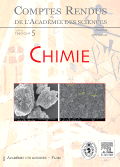
COMPTES RENDUS CHIMIE
Sharing Insights, Transforming the Future of Chemical Research.COMPTES RENDUS CHIMIE, published by the prestigious Académie des Sciences in France, stands as a significant journal in the fields of chemistry and chemical engineering. With an ISSN of 1631-0748 and an E-ISSN of 1878-1543, this open-access journal has been committed to disseminating high-quality research since its transition to open access in 2020. Featuring a diverse array of studies, the journal covers innovative research trends and applications, while maintaining a Q3 category ranking in both Chemical Engineering (miscellaneous) and Chemistry (miscellaneous) as of 2023. Its Scopus rankings, positioning at #251 out of 408 in general chemistry and #169 out of 273 in general chemical engineering, highlight its growing impact within the scientific community. Authored by a global cohort of scientists and researchers, COMPTES RENDUS CHIMIE is dedicated to the advancement of knowledge and sharing insights that are vital for ongoing research and development in the chemical sciences. Located in the heart of Paris at 23 Quai de Conti, 75006, France, the journal is an essential resource for those passionate about chemistry and engineering disciplines, fostering collaboration and innovation across the world.

Moscow University Chemistry Bulletin
Unveiling Cutting-Edge Discoveries in ChemistryMoscow University Chemistry Bulletin is a distinguished academic journal dedicated to advancing the field of chemistry, published by PLEIADES PUBLISHING INC. With an ISSN of 0027-1314 and an E-ISSN of 1935-0260, this journal provides a platform for researchers, professionals, and students to explore a wide range of topics in general and specialized chemistry. While it holds a current Q4 ranking in the “Chemistry (miscellaneous)” category according to Scopus, the journal is committed to broadening its scope and visibility, aiming for greater impact in the global scientific community. Moscow University Chemistry Bulletin focuses on the publication of cutting-edge research, reviews, and discussions that stimulate innovation and collaboration. Although it is not an Open Access journal, it plays a crucial role in disseminating knowledge and fostering academic dialogue within the field, as it converges towards significant findings from 2004 to 2024. The continuous development of its content holds the potential to attract a diverse readership, making it a valuable resource for those involved in the chemical sciences.
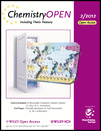
ChemistryOpen
Empowering Research Through TransparencyChemistryOpen is a leading open access journal published by WILEY-V C H VERLAG GMBH, dedicated to advancing the field of chemistry. With its ISSN 2191-1363, this journal has been a vital platform since its inception in 2012, promoting unrestricted access to innovative research findings and critical reviews in various chemistry domains. As a testament to its growing influence, ChemistryOpen has achieved a commendable Q2 quartile ranking in the 2023 Chemistry (miscellaneous) category, which highlights its quality and impact within the academic community. Researchers, professionals, and students benefit from the journal's commitment to making high-quality research accessible, facilitating knowledge transfer and collaborative insights among chemists worldwide. The journal's transparent open access model ensures that groundbreaking discoveries and methodologies are readily disseminated, fostering a culture of innovation and interdisciplinary dialogue in the ever-evolving landscape of chemistry.
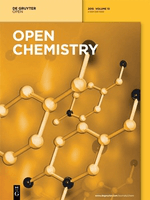
Open Chemistry
Bridging Gaps in Chemical Sciences with Open AccessOpen Chemistry, published by DE GRUYTER POLAND SP Z O O, is a distinguished peer-reviewed journal that has been serving the global chemistry community since its inception. With an ISSN of 2391-5420 and an E-ISSN also of 2391-5420, this open-access journal has been accessible to researchers and practitioners alike since 2015, ensuring a wide dissemination of high-quality research findings. Located in Germany, specifically at BOGUMILA ZUGA 32A STR, 01-811 WARSAW, MAZOVIA, POLAND, Open Chemistry aims to publish innovative research across various chemical disciplines, with special attention to miscellaneous chemistry and materials chemistry. It is currently ranked in the Q3 category for both fields as of 2023, reflecting its solid standing within the academic community, with specific ranks of 187/408 in General Chemistry and 153/317 in Materials Chemistry, corresponding to respective percentiles of 54 and 51. Open Chemistry not only enhances the accessibility of cutting-edge research but also serves as a vital resource for students, professionals, and scholars seeking to advance their knowledge in the rapidly evolving landscape of chemical sciences.
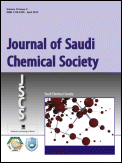
Journal of Saudi Chemical Society
Leading the Charge in Cutting-edge Chemical Discoveries.The Journal of Saudi Chemical Society, published by ELSEVIER, stands as a premier platform for advancing knowledge in the field of chemistry. Since its inception in 2009, this Open Access journal has garnered significant attention, securing a prestigious Q1 ranking in the Chemistry (miscellaneous) category for 2023, reflecting its position among the top journals in the discipline. With an impressive Scopus ranking of #66 out of 408 in General Chemistry, this journal boasts a commendable 83rd percentile, underscoring its impact and relevance in the global research community. The journal aims to disseminate high-quality research articles, reviews, and case studies, fostering innovation and collaboration among chemists and allied professionals. By enabling widespread access to cutting-edge research, the Journal of Saudi Chemical Society plays a crucial role in supporting the educational and professional development of students, researchers, and practitioners alike, making it an essential resource for anyone invested in the dynamic field of chemistry.

Revista Virtual de Quimica
Connecting Researchers to Transformative Chemistry KnowledgeRevista Virtual de Quimica, published by the SOC BRASILEIRA QUIMICA, is a dynamic online journal based in Brazil, dedicated to promoting innovative research in the field of chemistry and related disciplines. Established in 2011, the journal has made significant strides in contributing to the academic landscape, receiving an impact factor that highlights its relevance, although it currently holds a Q4 quartile ranking in the miscellaneous category of Chemistry and Mathematics as of 2023. The journal is committed to open access, ensuring that scholarly articles are readily available to researchers, professionals, and students worldwide. Its focus encompasses diverse areas within general chemistry, aiming to foster knowledge sharing and collaboration among the scientific community. By providing a platform for high-quality research publications, Revista Virtual de Quimica stands as an essential resource for advancing chemical sciences and encouraging interdisciplinary studies.
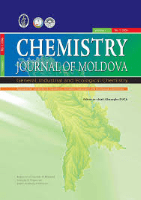
Chemistry Journal of Moldova
Advancing Chemistry: Bridging Research and Innovation in MoldovaChemistry Journal of Moldova is a pioneering open-access journal dedicated to fostering the dissemination of significant research in the diverse fields of chemistry, including Environmental Chemistry, Process Chemistry and Technology, and more. Published by the esteemed Academia Sciences Moldova, Institute of Chemistry, this journal has been at the forefront of scientific inquiry since its establishment in 2006. With an ISSN of 1857-1727 and a digital presence through its E-ISSN of 2345-1688, it provides an accessible platform for researchers, students, and professionals to share and engage with cutting-edge findings. Although currently ranked in the Q4 quartile in several chemistry categories, the journal is committed to improving its impact within the academic community and aims to highlight emerging trends and technologies in the chemistry domain. The journal's office is located at 3 Academiei Str, Chisinau MD-2028, Moldova. As it converges its publication years from 2016 to 2024, the Chemistry Journal of Moldova invites all contributors and readers to explore its rich repository of research that bridges innovative ideas to practical applications.

Studia Universitatis Babes-Bolyai Chemia
Connecting Ideas, Advancing ChemistryStudia Universitatis Babes-Bolyai Chemia, published by UNIV BABES-BOLYAI in Romania, serves as a pivotal platform for the dissemination of innovative research in the field of chemistry. With an ISSN of 1224-7154, this journal has been actively publishing since 2009 and aims to foster scientific collaboration and knowledge sharing among researchers, professionals, and students alike. Although currently categorized in Q4 of the Chemistry (miscellaneous) field, the journal provides an essential venue for emerging studies that contribute to the diverse landscape of chemical research. With its commitment to accessibility and scholarly discourse, Studia Universitatis Babes-Bolyai Chemia remains an important resource for those seeking to stay abreast of the latest developments and trends in general chemistry, holding a Scopus rank within the lower quartiles. Researchers and practitioners are encouraged to engage with its content to enrich their own work and to aid in the advancement of the scientific community.